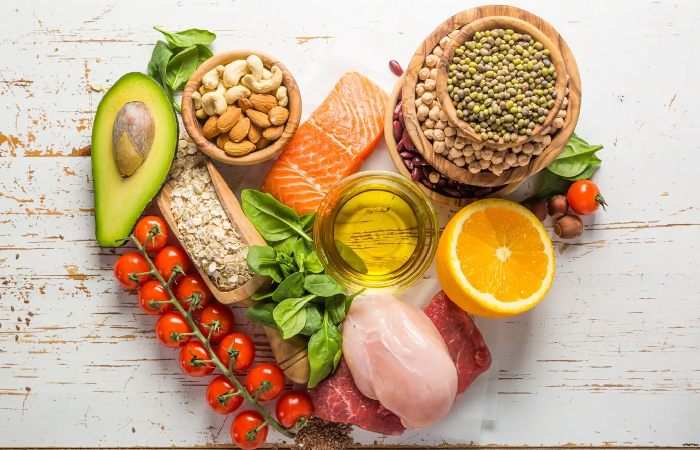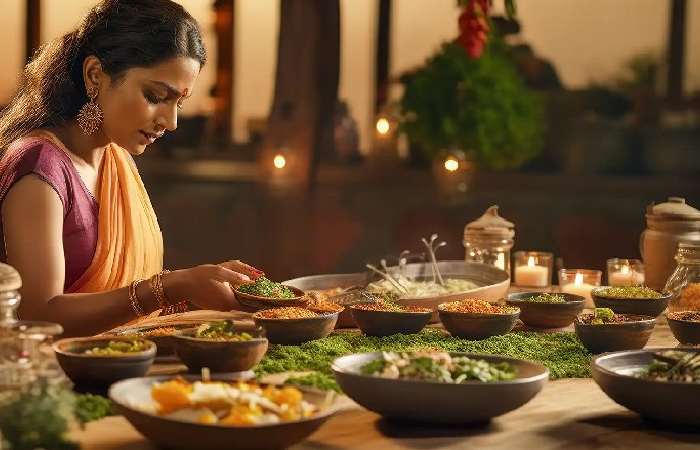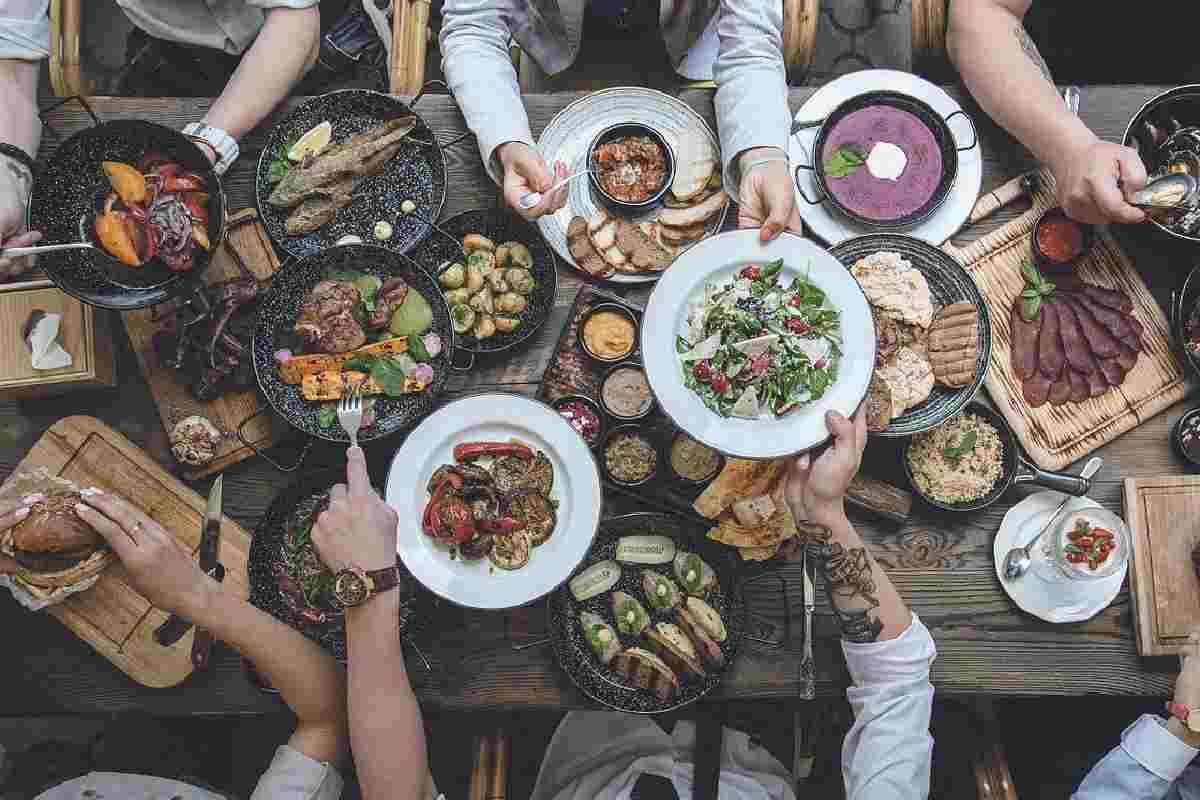Wellhealthorganic.com:ayurveda-dinner —The Ayurveda diet is an eating plan based on the standards of Ayurvedic medication. It focuses on adjusting various types of energy inside your body, which is said to develop well-being further.
It’s also well known because it is said to advance better well-being for your body and mind.
This article guides everything you need to know about the Ayurveda dinner, including its benefits, food varieties to eat and avoid, and recipes.
Table of Contents
What is the Ayurvedic diet?

Ayurveda is an all-encompassing Indian medication that advances harmony between the body and mind.
According to Ayurveda, the universe consists of five components: vayu (air), Jala (water), Akash (space), Teja (fire), and Prithvi (earth).
These components are accepted to shape three distinct doshas, which are characterized as sorts of energy that flow inside your body. Each dosha is liable for explicit physiological functions.
For instance, the pitta dosha controls craving, thirst, and internal heat levels. In the meantime, the vata dosha maintains electrolyte balance and movement, while the kapha dosha advances joint functions.
How does it work?
The Ayurvedic diet is an eating principle that sets rules for when, how, and what you should eat based on your dosha or body type.
Here are a portion of the primary qualities for each dosha to assist you with figuring out which type matches you best:
Pitta (fire + water): Keen, diligent, and definitive. This dosha, for the most part, has a medium actual form and irritability and may experience the ill effects of conditions like heartburn, coronary illness, or hypertension.
Vata (air + space): Inventive, energetic, and enthusiastic. Individuals with this dosha are typically flimsy with a light edge and may battle with stomach-related issues, weakness, or nervousness when out of balance.
Kapha (earth + water): Usually quiet, grounded, and faithful. Those with a kapha dosha frequently have a sturdier casing and may disapprove of weight gain, asthma, depression, or diabetes.
In this eating regimen, your dosha determines which food varieties you should eat to promote inner balance.
Examples
For instance, the pitta dosha centers around cooling and energizing food varieties and limits spices, nuts, and seeds.
- In the interim, the vata dosha leans toward warm, saturated, and establishing food sources while limiting dried natural products, harsh spices, and crude veggies.
- Finally, the kapha dosha restricts weighty food varieties like nuts, seeds, and oils to natural products and vegetables.
- Red meat, fake sugars, and processed fixings are restricted for each dosha. Nonetheless, the Ayurvedic diet empowers eating solid whole food varieties.
Wellhealthorganic.com
Wellhealthorganic.com is a website with the best health and fitness tips in Hindi. It provides the best health care, fitness tips, skincare, Beauty tips, Ayurvedic benefits and tips, and Home remedies in Hindi.
This website supports your wellness journey by providing tips and reliable, easy-to-understand information.
Wellhealthorganic.com:Ayurveda-Dinner
It is essential to include the right food items in dinner. What you eat at night can help you stay healthy, but it can also lead to increased weight and other health problems.
Dinner can have a direct impact on your mind and body. It is not just what you eat that matters but also the timing, ensuring your body functions properly.
Dietitians call breakfast the most important meal of the day. It is the day’s first meal after a break of 6-8 hours after dinner. But other meals like lunch and dinner are also important and should not be skipped. More importantly, giving up any of these foods will not lose weight, as is usually believed.
What is Kapha Dosha?
Kapha dosha is the Ayurvedic mind-body component associated with earth and water. It is slow, moist, cold, oily, heavy, smooth, and stable, symbolizing structure, well-being, and stability in mind and body.
Foods that increase Kapha dosha
You should avoid having certain foods for dinner as they imbalance Kapha dosha. Avoid eating junk, oily, frozen, heavy-to-digest, non-vegetarian items, curd, or ice cream at night. Even if you eat them, try to eat them in limited quantities. Consuming them in excess at night can cause an imbalance in the body and complications such as:
- Gaining weight
- Cough and cold.
- The feeling of vomiting
- Indigestion
- Excessive salivation in the morning
- Allergies
Know Ayurvedic tips on eating healthy at night.
- Eat healthy and low-impact foods at night.
- Drink buttermilk instead of curd.
- Ayurveda suggests keeping dinner light as this will help you get good sleep.
- Include more protein-rich foods at night.
- Avoid salt after 7 pm.
- Salt is considered to increase water retention in the body. Therefore, please reduce the intake of salt.
- Include more spices in dinner.
- Reduce your sugar intake and consume more honey.
- If you take milk before sleeping, prefer low-fat milk.
The rule you should follow while eating dinner is to ensure that whatever you eat does not leave you feeling heaviness in the stomach. Instead, your stomach should feel light so that you sleep properly.
Wellhealthorganic.com:Ayurveda-Dinner Benefits
Here are a few of the potential benefits of the Ayurveda dinner.
- Encourages whole foods
- Could promote weight loss
- Promotes mindfulness
Wellhealthorganic.com:Ayurveda-Dinner Recipes

An Ayurvedic recipe is taken from the nutrition course to rebalance the Kapha type.
1. Spring Chard
Ingredients
- 2 medium chard
- 2 cloves garlic
- 1 C extra olive oil
- 1 c . of caraway seeds (karvi)
- 1 c. of black mustard seeds
- 1 tbsp. Of powdered ginger
- Rock salt to taste
Notes: (recipe for 4-5 people)
Preparation
- Wash and cut the potatoes into cubes (if new and organic, you can leave the peel)—no floury potatoes.
- Clean and wash the ribs and cut them into strips.
- Place a spoonful of olive oil in a pan.
- Add the garlic, cumin seeds, and mustard seeds immediately.
- Let the spices heat until the mustard seeds splutter.
- Then, add the potatoes, let them brown for a moment, and then add a little water to prevent them from burning.
- After that, you can add the powdered ginger immediately after the beets.
Put a lid on and let the beets dry a little. - When they have reduced volume, take care that they do not burn first, add a little water, and leave the vegetables to stew slowly until they are ready.
- Serve them piping hot.
Vata-Balancing Stew
Ingredients
- 1 cup butternut squash, cubed
- 1 cup carrots, sliced
- 1 cup sweet potatoes, cubed
- 1 cup kale, chopped
- 1 cup chickpeas, cooked
- 1 onion, diced
- 2 cloves garlic, minced
- 1 tablespoon fresh ginger, grated
- 1 teaspoon cumin seeds
- 1 teaspoon turmeric powder
- 1 teaspoon coriander powder
- 1/2 teaspoon fennel seeds
- 4 cups vegetable broth
- 2 tablespoons olive oil
- Salt and pepper to taste
Preparation
- In a huge pot, heat the olive oil over medium heat. Add cumin and fennel seeds and sauté until they begin to snap.
- Add the onion, garlic, and ginger. Sauté until the onion becomes light brown.
- Mix in the turmeric and coriander powder.
- Add the butternut squash, carrots, and yams. Cook for around 5 minutes, mixing occasionally.
- Pour in the vegetable stock and heat to the point of boiling. Decrease the intensity and let it stew for around 20 minutes or until the vegetables are delicate.
- Add the kale and chickpeas, cooking for 5 extra minutes.
- Season with salt and pepper. Decorate with new cilantro before serving.
Conclusion
If you are health conscious and want to live a healthy lifestyle. Please try the Wellhealthorganic.com:Ayurveda-Dinner And Recipes.

